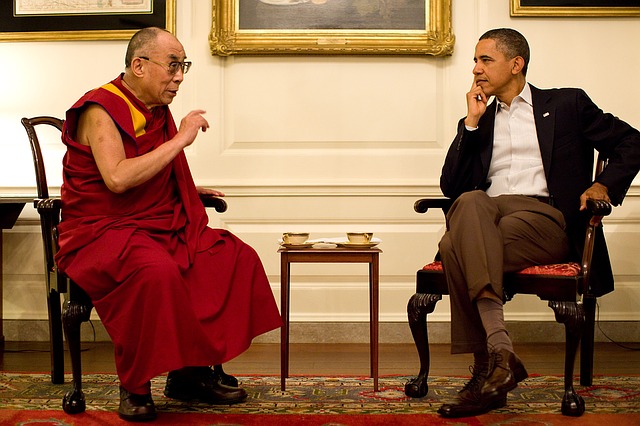The following is a guest article from Sameer Desai.
***
Do you struggle to talk to people when you first meet them? Want to say hi to that cute girl in the coffee shop but don’t know how to say it?
In this age of texts, snapchats, and Facebook messages, small talk gets underappreciated and overlooked.
Small talk is a light, casual conversation that avoids obscure subjects, arguments, or emotionally charged issues. It forms the everyday conversations you have with casual acquaintances, both old and new.
This 30-second primer on the three parts of small talk will kickstart your conversations:
Approaching a conversation
Body language and the way you present yourself make a memorable impact when you approach someone for the first time. To make it a success, just remember SULTE.
- S – Smile! Lead with a smile. It’s the first and most potent non-verbal cue and instantly makes you 50x more approachable. Be sure it’s a truly genuine smile – the one you get when you think about a happy memory or someone you love.
- U – Use your hands! Excellent communicators know the power of simple, expressive hand gestures. Imagine someone who is stiff as a board vs. someone who talks with their hands. Who do you think comes across more interesting and powerful? Practice using your hands to emphasize your words and bring life to your stories.
- L – Lead with energy! When you enter a room, crank up your energy level by 50% beyond normal. It might seem weird to you, but it will feel normal from everyone else’s perspective. High energy people light up a room. Visualize the energy you have when you are talking about a topic you love. Channel that same energy when you meet someone new and
watch the magic happen. - T – Talk Slowly.
 Increase energy, but not speed. Speak more slowly. Think of how President Obama speaks when meeting someone. He’s not hurried or rushed. When he talks, people hang on every word. That’s the power of slow, deliberate speech. You signal that you are worth listening to intently. You will have more gravitas and confidence. Try it!
Increase energy, but not speed. Speak more slowly. Think of how President Obama speaks when meeting someone. He’s not hurried or rushed. When he talks, people hang on every word. That’s the power of slow, deliberate speech. You signal that you are worth listening to intently. You will have more gravitas and confidence. Try it! - E – Eye Contact. Eye contact is critical. Don’t stare the person down, but focus on what they’re saying with open, relaxed eyes. Most importantly, make sure you’re fully present. Fight the urge to check your phone or look at your watch. This will show the other person you value what they’re saying.
The great thing about the SULTE framework is you can implement it today. Take time to practice it. Pay attention to the effect it has on your small talk. What do you notice?

Starting the conversation
Now that you’ve mastered body language, how do you start small talk? Use the Anchor, Reveal, Encourage (ARE) framework.
- Anchor. When you meet someone for the first time, try to notice and observe a thread of connection and comment on it.
- Reveal. After he or she acknowledges your statement with a smile and his or her own comment, mention something about yourself that builds on your original statement.
- Encourage. Finally, tee up a question that relates to the topic to push the conversation forward!
Here is an example how it all fits together if you want to strike up a conversation with someone at a coffee shop.
- Anchor. Man, they serve the best cafe lattes here!
- Reveal. I’ve bought a cafe latte here for the past two weeks, and I’ve never been disappointed!
- Encourage. Are you a big coffee drinker?
Using the ARE framework allows you to provide a jumping off point for a great conversation!

Continuing the conversation
Once you’ve started the conversation, how do you sustain it? Use the FORM method to keep it going! FORM stands for Family, Occupation. Recreation, Motivation.
- Family. Ask about their family and then tell them about yours. Ex. Do you have a big family? Did you grow up in the area?
- Occupation. Ask them about their job and their livelihood. Talk about how your jobs compare or differ. How do you spend your time during the week? What’s your favorite part about doing X or working at Y company?
- Recreation. Ask what they like to do on the weekends. Sports, hobbies, volunteer work, anything. If you find something in common, jump on it! Do you enjoy Hiking/running? Do you find it hard to find time for it?
- Motivation. Ask them what their passions. This is a powerful way to find out what they value. What do you absolutely love doing, both at work and outside of it?
Here is a good sample conversation:
- You: Where are you from?
- Them: I grew up in Chicago!
- You: Did you like Chicago? I actually stopped through Chicago for New Year’s Eve, spent a weekend there with some of my best friends.
- Them: I loved Chicago. I’ve never done NYE there, but I heard it’s amazing. Was it brutally cold?
The goal is to focus the spotlight on them and let them do 70% of the talking. A great rule of thumb: Ask two to three questions, and then make a statement. The FORM method gets easier and easier the more you practice!
Your turn!
This week, strike up a conversation with three people using these frameworks. Just three. It could be the cute girl in the coffee shop, your neighbor in the elevator, and your colleague at lunch.
The more you practice, the better you get. Tell me in the comments – how did it go?
